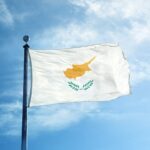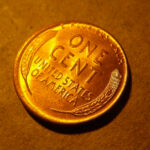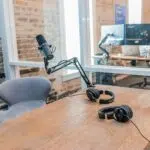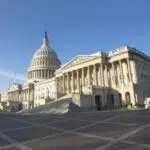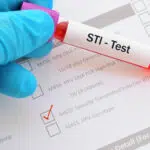Deaf History Month takes place in April every year. Although National Deaf History Month is not a federally recognized holiday, it’s a time to raise awareness about the deaf community and their struggles in our society. The month also focuses on honoring the immense contributions of deaf individuals and the deaf community to our country. During this month, we also get to learn more about the ongoing advocacy work many organizations undertake to make life easier and more inclusive for deaf and hard-of-hearing individuals.
History of Deaf History Month
Deaf History Month is an awareness month for the deaf and hard-of-hearing persons in the U.S. On March 13, 1988, the ‘Deaf President Now’ — also known as the DPN Movement — successfully campaigned for the appointment of a deaf president at Gallaudet University. Dr. I. King Jordan subsequently became Gallaudet University’s first deaf president. On April 8, 1864, America’s only higher education institution for deaf and hard-of-hearing students Gallaudet University was founded, following President Abraham Lincoln’s assent of the charter which established the prestigious college. The university is named after notable educator and minister, Thomas Hopkins Gallaudet, who pioneered research and advocacy for an improved educational system for deaf and hard-of-hearing students in the U.S. Lastly, American School for the Deaf (ASD) in West Hartford, Connecticut — the first permanent public school for the deaf and hard-of-hearing — was founded on April 15, 1817.
The celebration of the National Deaf History Month is traced to two deaf employees at the Martin Luther King Jr. Memorial Library in Washington D.C. who taught their colleagues sign language on March 13, 1996. This event spurred the library management led by the deaf librarian, Alice Hagemeyer — who also initiated Friends of Libraries for Deaf Action (FOLDA) — to create the Deaf Awareness Week in 1997. In 2006, the American Library Association (ALA) and National Association of the Deaf (NAD) designated March 13 to April 15 of every year as Deaf History Month and a month-long nationwide event. Since then, both advocacy organizations have continued to clamor for a federal proclamation of National Deaf History Month by the White House and/or Congress. In 2022, NAD changed Deaf History Month to the full month of April.
Deaf History Month timeline
The American School for the Deaf opens in Hartford, Connecticut.
President Abraham Lincoln signs the charter establishing Gallaudet University, the first college for the deaf.
Dr. I. King Jordan becomes Gallaudet University’s first deaf president following the request of the Deaf President Now (DPN) Movement.
The first annual, nationwide National Deaf History Month is celebrated from March 13 to April 15.
Deaf History Month FAQs
Is September Deaf Awareness Month?
September is Deaf Awareness Month, and September 20 marks the beginning of International Week of the Deaf.
How do you celebrate Deaf Awareness Month?
Learn sign language; advocate for deaf accessibility at work and in your community; volunteer at deaf rights advocacy groups or schools for the deaf; support deaf businesses, and share the works of deaf creators.
Why is Deaf Awareness Month important?
Running through September, Deaf Awareness Month spotlights the countless struggles of deaf individuals and the deaf community in our society.
How to Observe Deaf History Month
Learn sign language
Celebrating National Deaf History Month can start with learning American Sign Language (ASL). It will be fun and beautiful learning how to communicate with deaf persons around you.
Learn more about deaf history
You’ll find many useful contents about the history, challenges, and achievements of the deaf community. Consider memoirs, articles, books by deaf authors, and TED talks that feature deaf speakers.
Partner with the deaf community
There are various deaf rights advocacy groups in the U.S. Search through the websites of these advocacy groups to learn how you can join their fight for equity for the deaf community.
5 Facts About Hearing Loss
People living with hearing loss globally
One in every three people over 65 — about 165 million people worldwide — struggles with hearing loss.
Millions of Americans live with deafness
About 38 million Americans — roughly 12% of the U.S. population — have a significant hearing loss.
Children with hearing loss in the world
Roughly 32 million people affected by hearing loss worldwide are children under the age of 15.
Loud music causes hearing loss
Repeated exposure to loud noise — 85 decibels or higher — is the leading cause of hearing loss.
Many famous people have it
Many notable figures — Halle Berry, Thomas Edison, Brian Wilson, Barbra Streisand, and Ludwig van Beethoven — have all struggled with hearing loss.
Why Deaf History Month is Important
Advocating for the rights of deaf persons
Many deaf and hard-of-hearing people often struggle with stigma in our society. Deaf History Month offers the right opportunity to speak up for them and advocate for their inclusion and accessibility in our communities.
Celebrating the community
The deaf community is one that is largely ignored. Having Deaf History Month enables us to celebrate and remember this community
Creating awareness
National Deaf History Month raises awareness about the deaf and hearing-impaired community. With proper awareness, we can share and celebrate their culture and celebrate diversity and inclusiveness.
Deaf History Month dates
| Year | Date | Day |
|---|---|---|
| 2026 | April 1 | Wednesday |
| 2027 | April 1 | Thursday |
| 2028 | April 1 | Saturday |
| 2029 | April 1 | Sunday |
| 2030 | April 1 | Monday |














